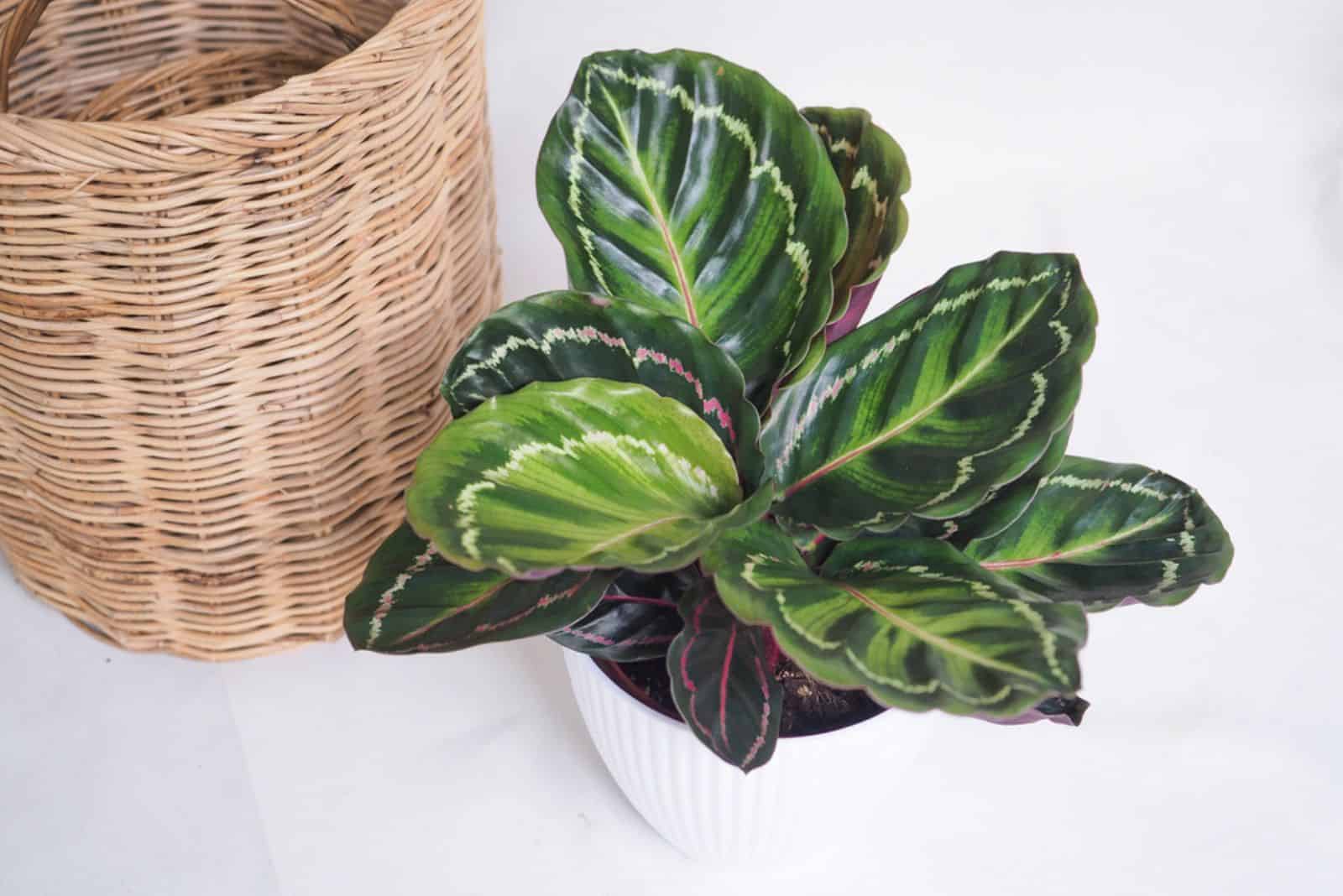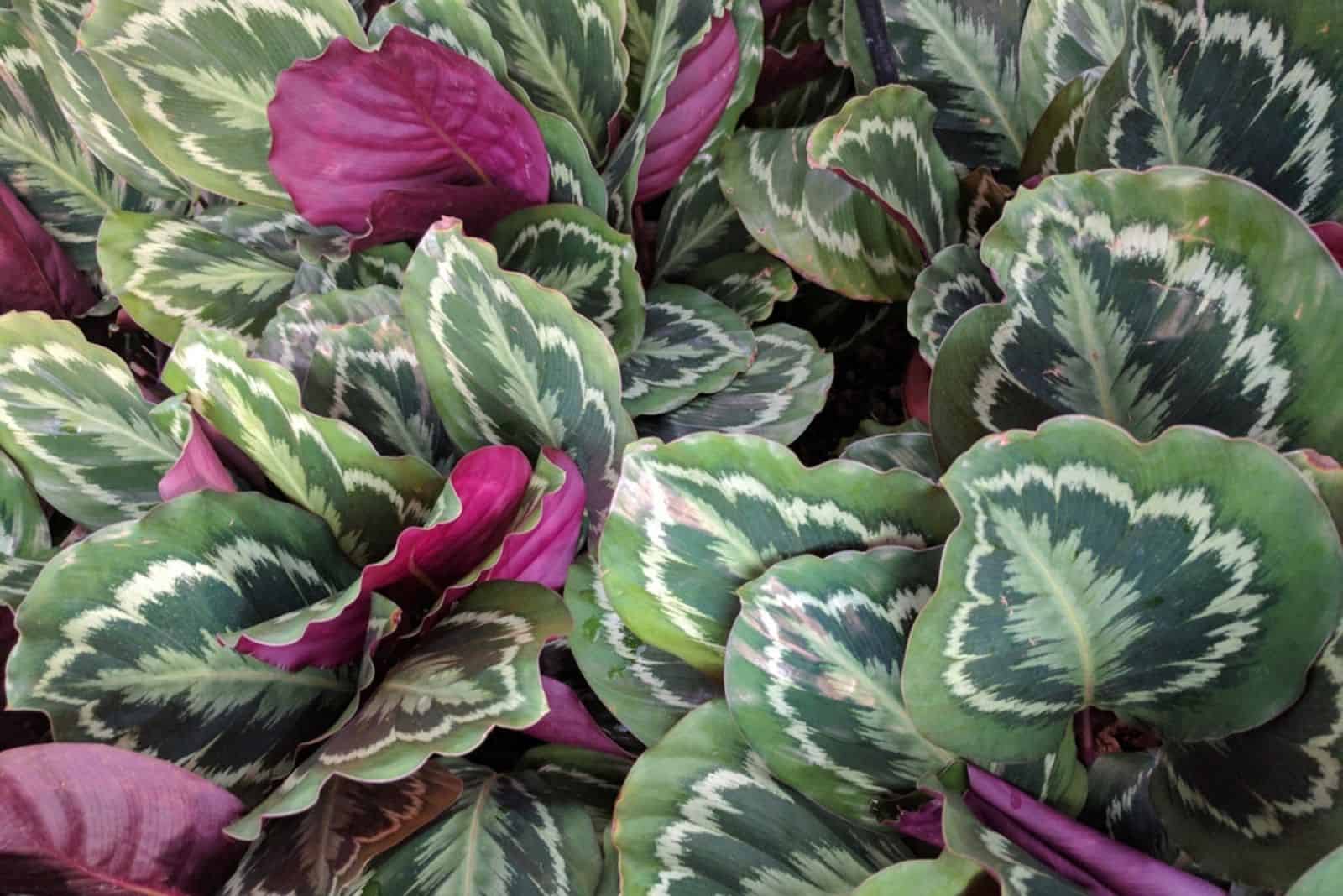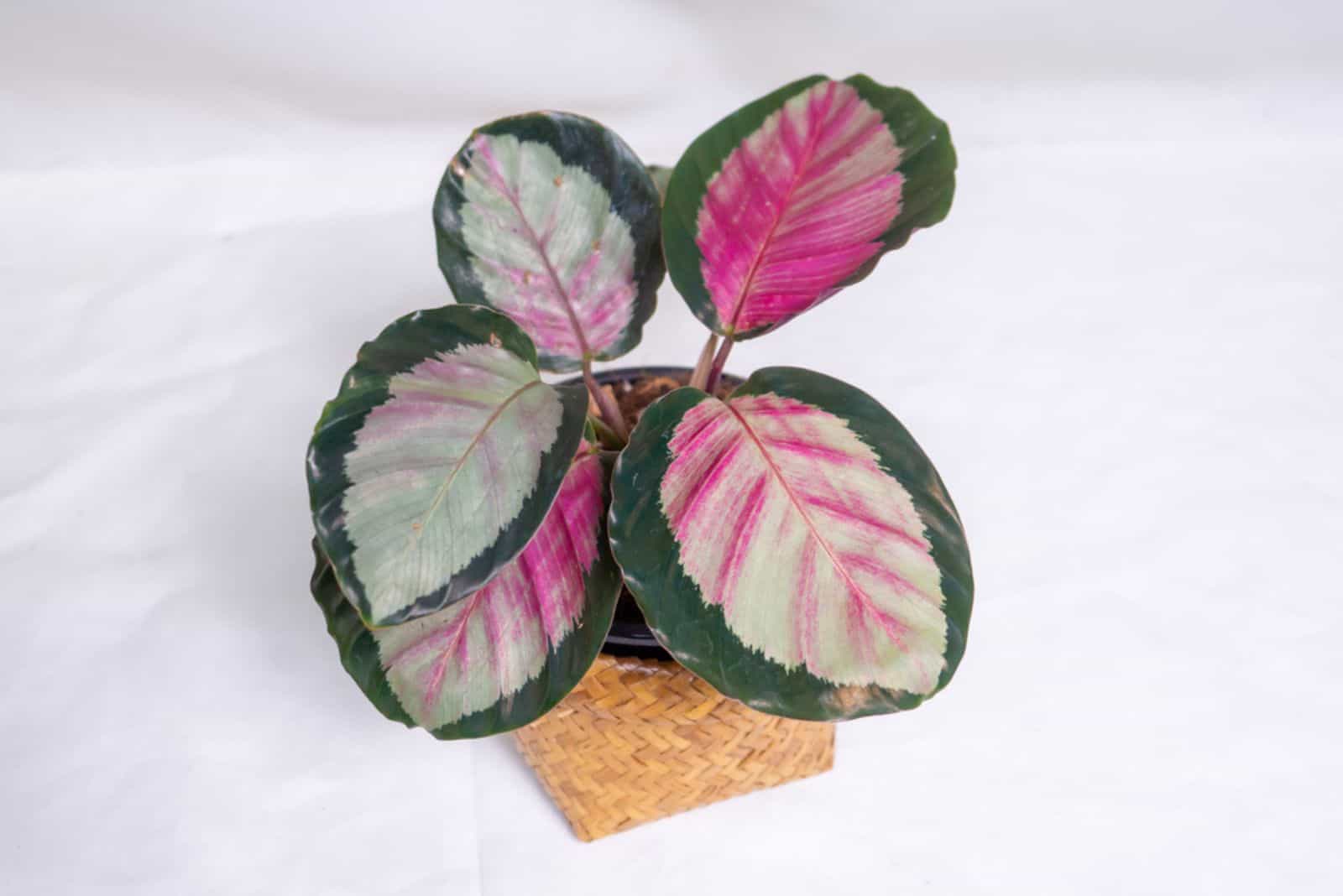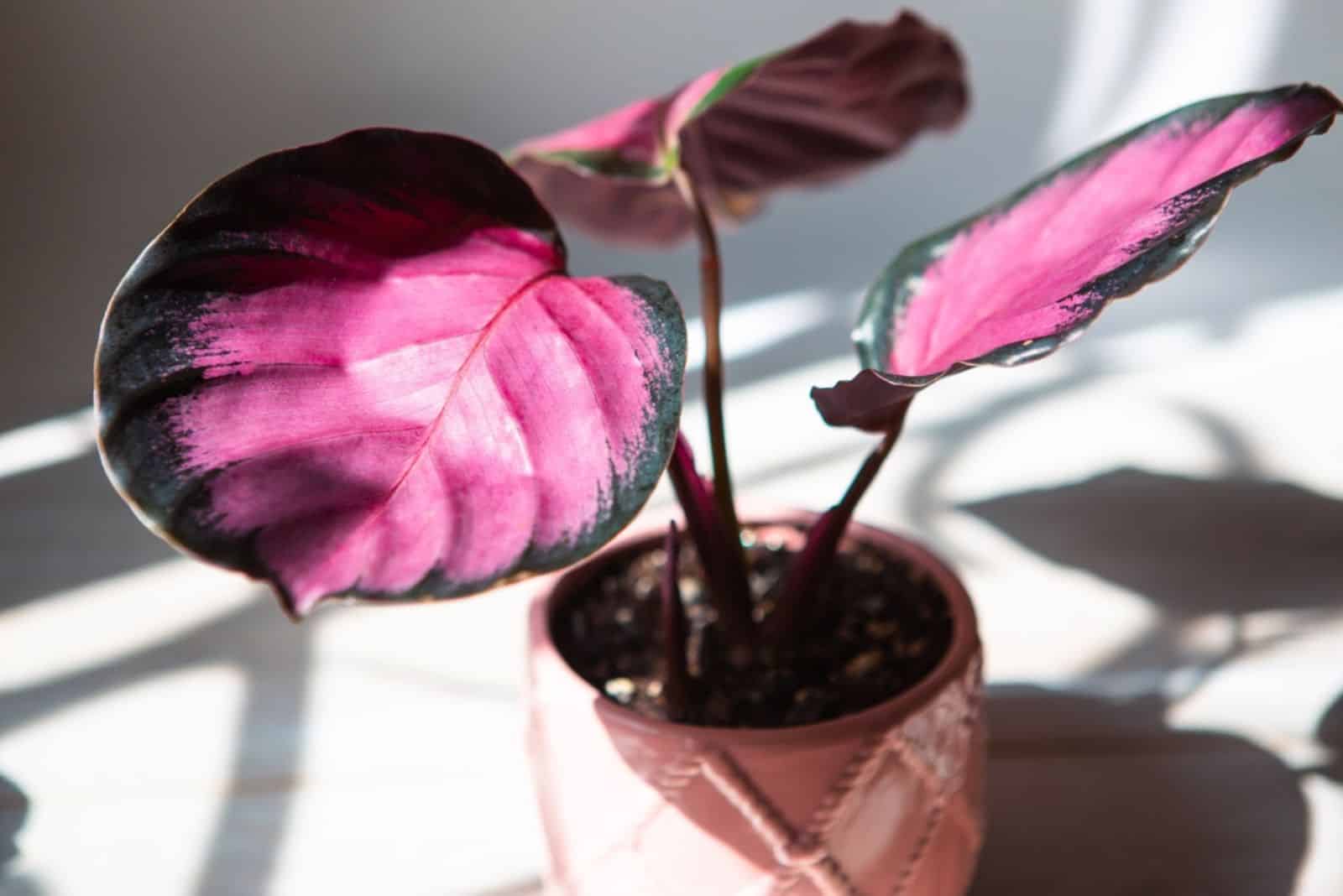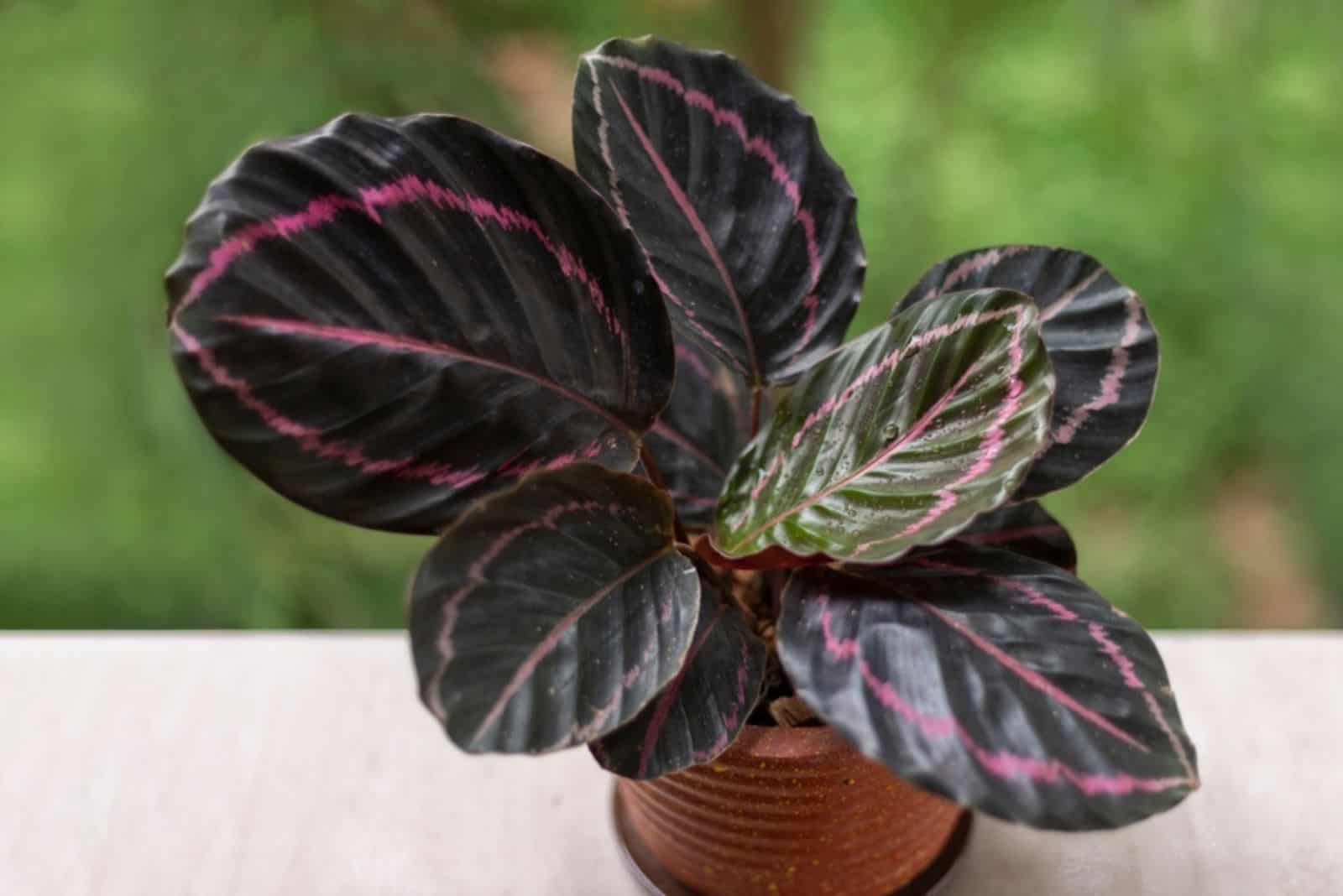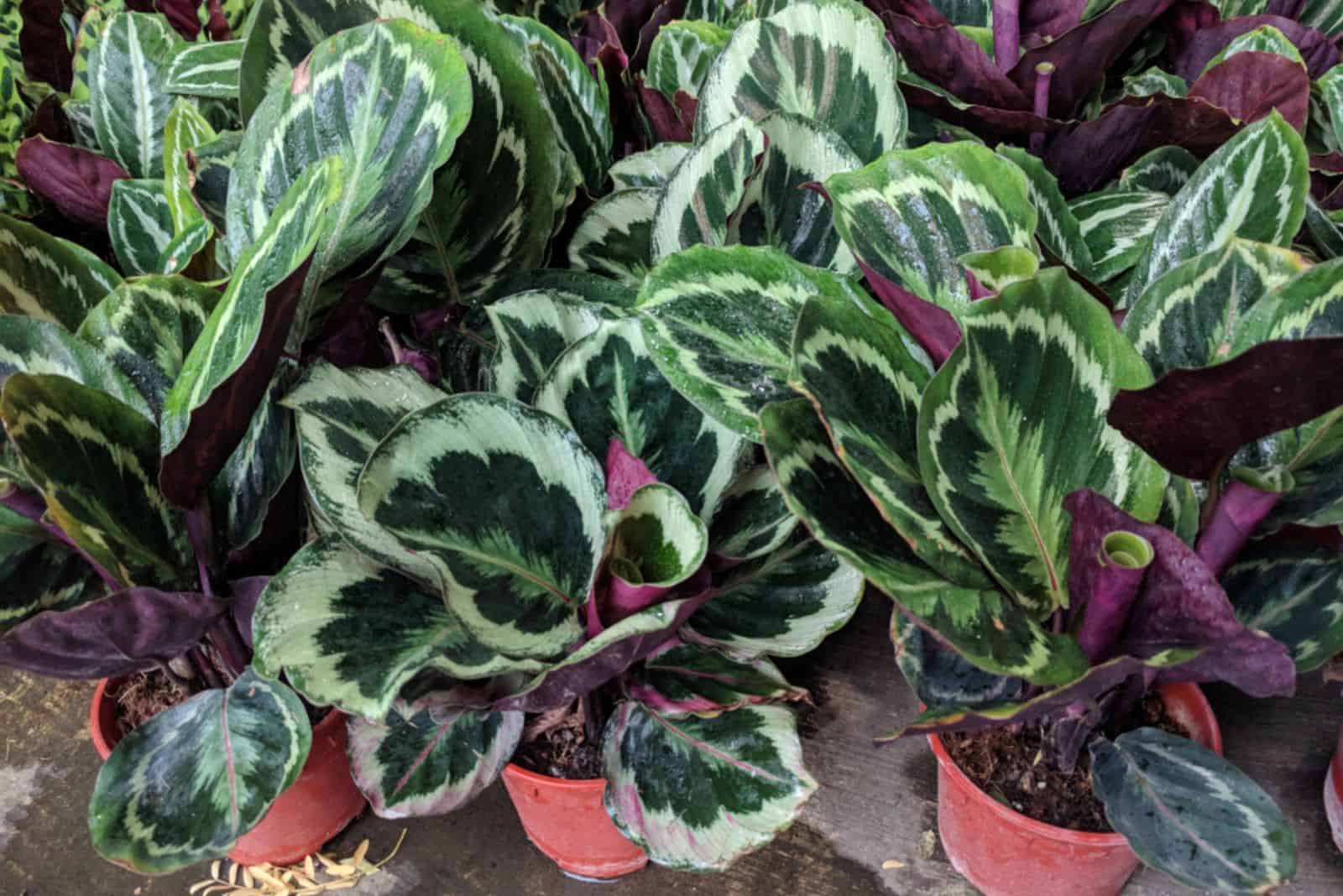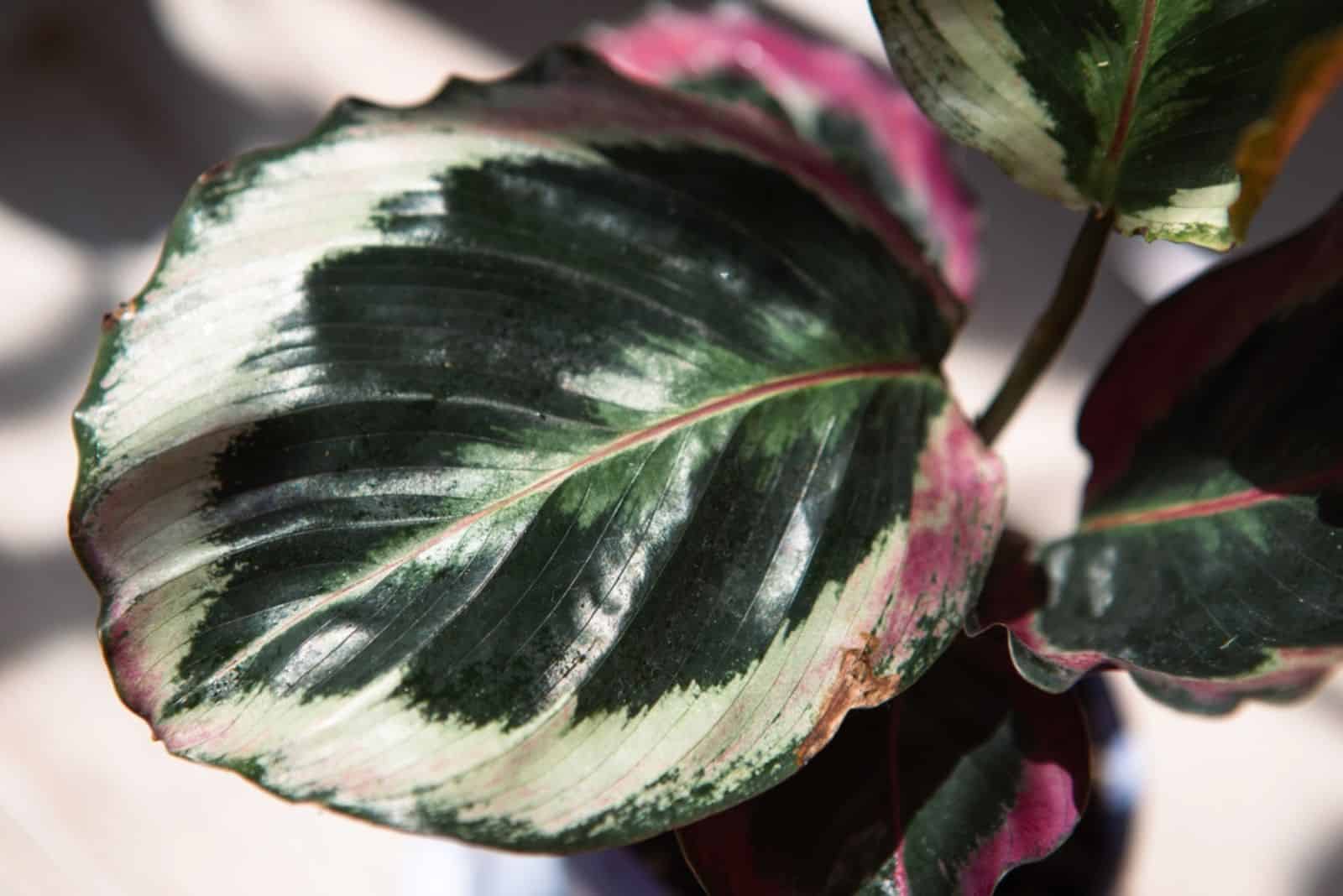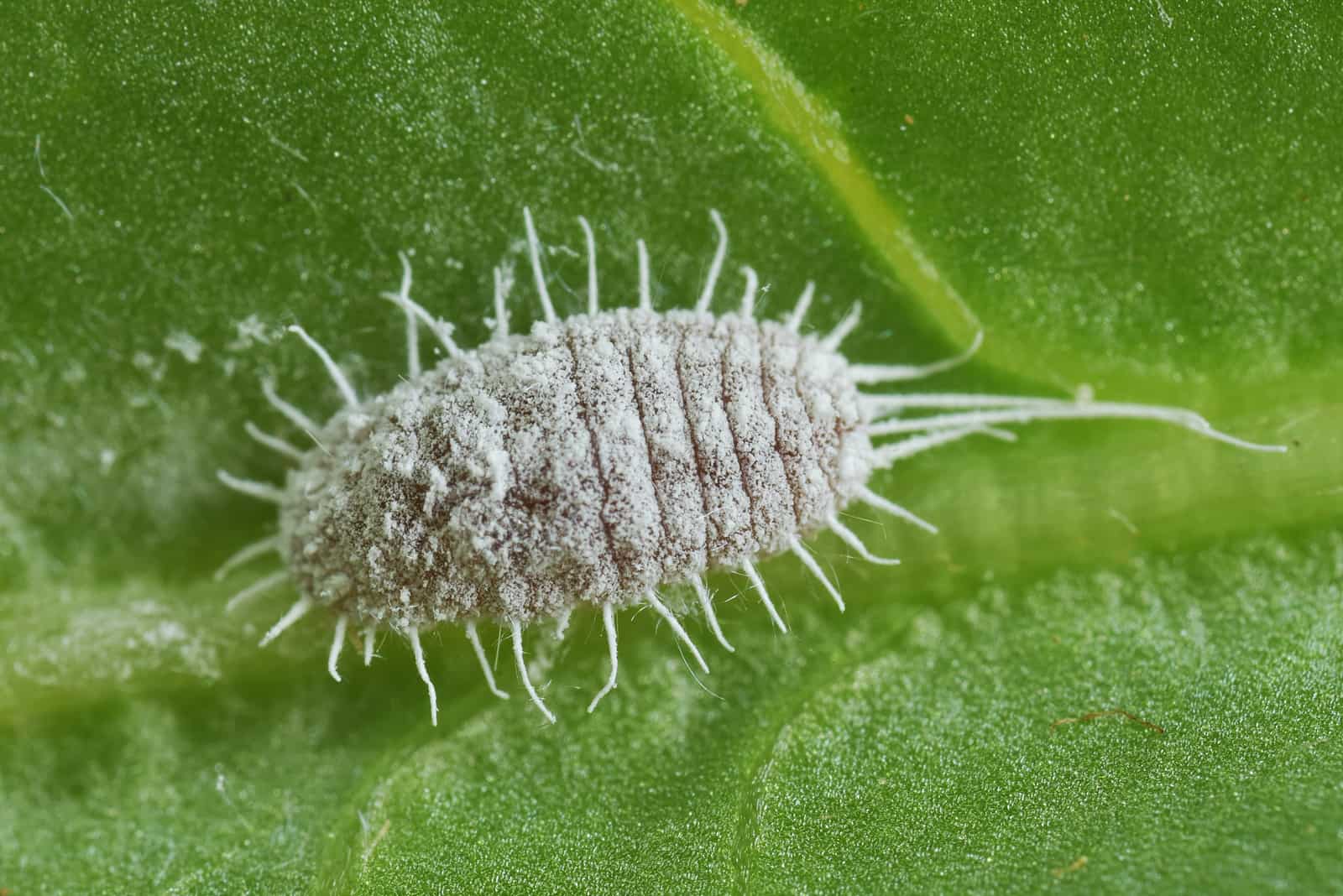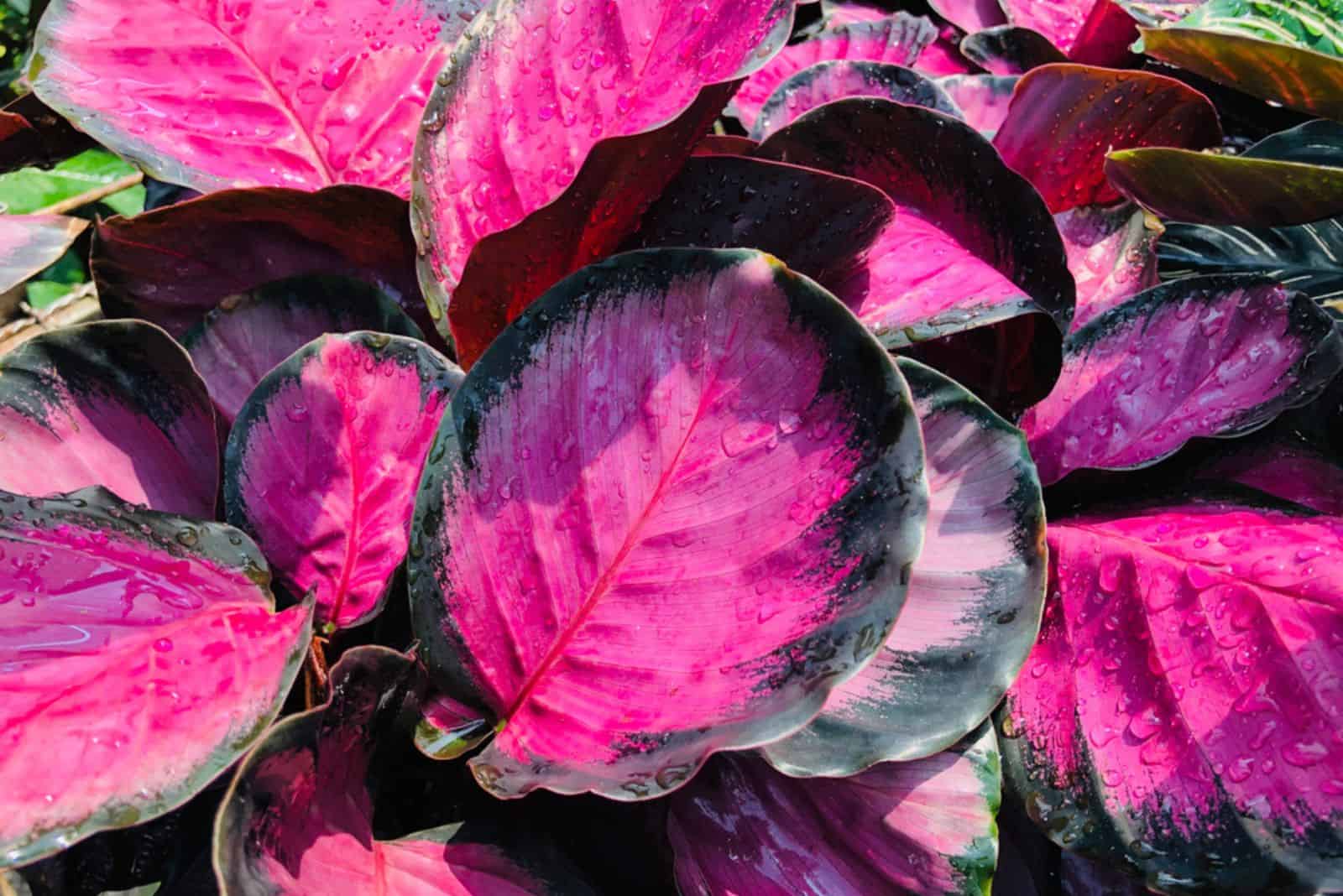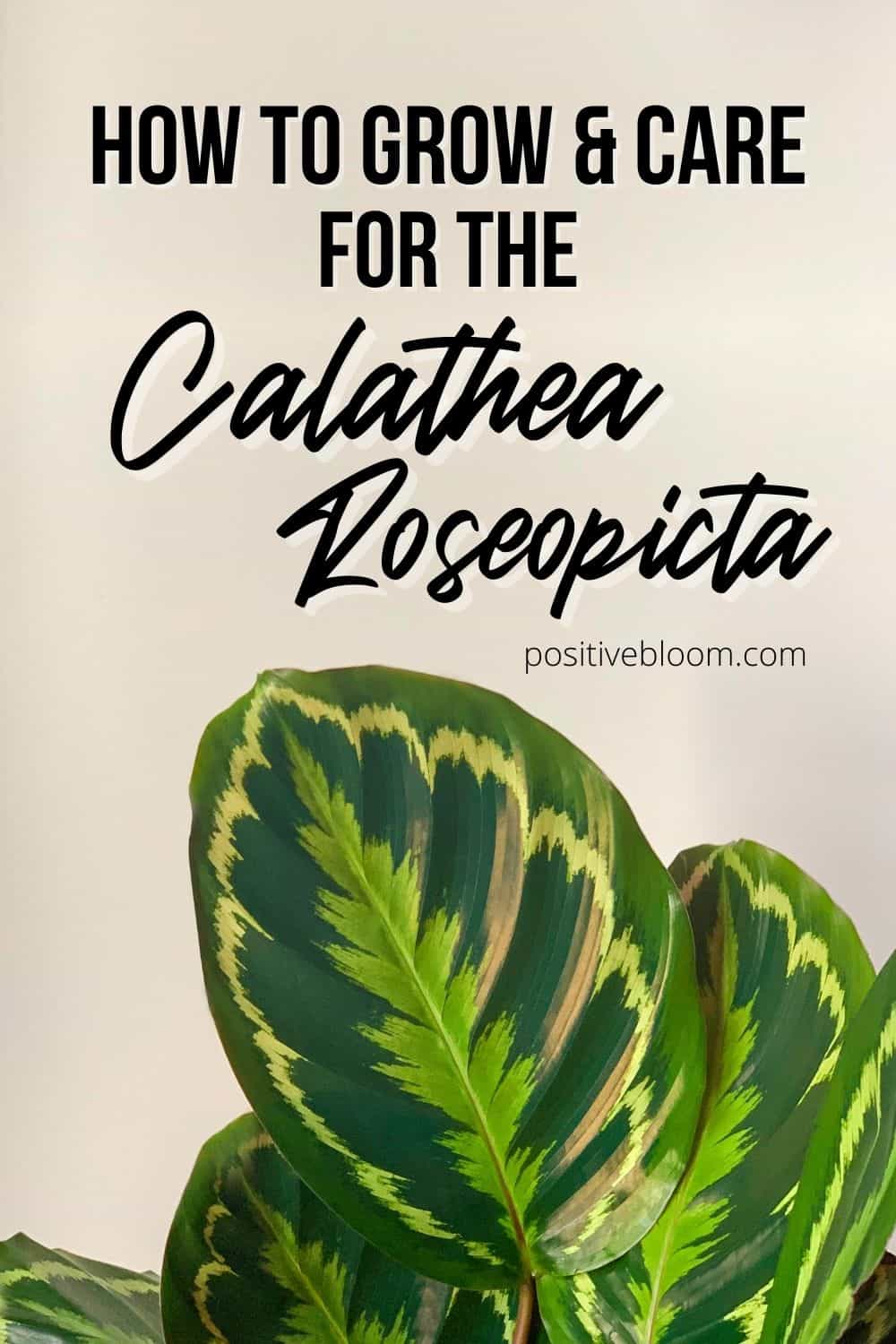Hailing from the rainforests of South America, the Calathea roseopicta is one of the prettiest houseplants you’ll find.
Its nickname, rose-painted Calathea, probably suits it better; if you want a plant with broad pink leaves, then this Calathea is perfect for you.
The Roseopicta Calathea also belongs to the prayer plant family, which is another excellent thing. These plants literally fold up during the night, and it looks as though they’re praying.
There’s one tiny problem with this plant, however; it can be pretty fussy about growing conditions compared to other houseplants. I said tiny because once you read this article, I’m sure you’ll know exactly how to make this unique plant happy.
Before we move on, here is some basic info about this Calathea plant:
[table id=489 /]
Let’s get started!
What Is The Calathea Roseopicta?
Before I start describing the magnificent appearance of this plant, there’s one point of confusion I’d like to resolve.
It’s no longer referred to as Calathea roseopicta in the scientific sense. It has been reclassified to Goeppertia roseopicta. You can still call it Calathea as it’s an accepted synonym, but not the real name.
So, what makes this plant so special? This Calathea plant features gorgeous, broad, dark green leaves. When looking at the leaves, you get the feeling that Mother Nature took a paintbrush and added vivid pink patterns herself.
Once the roseopicta Calathea matures, the pink fades away, making the pattern whitish.
That’s not all! The undersides of the leaves of the rose-painted Calathea are reddish purple. When night approaches, your Calathea will fold up just like all other prayer plants; dark green and reddish purple colors will seem to blend, and your Calathea will become maroon. How remarkable!
When Prayer plants fold up at night. it’s known as leaf movement, i.e., nyctinasty.
Rose-Painted Calathea Varieties
The first Calatheas were introduced in the 19th century, so it’s no wonder we have so many hybrids nowadays.
Some of the most common Calatheas include Calathea ornata, Calathea Maui queen, Calathea white fusion, and Calathea faciata.
Each of these Calatheas has its own hybrids.
Here is a list of the most common Roseopicta hybrids.
1. Calathea roseopicta Rosy: This hybrid features oval-shaped leaves. The leaf edges are dark green, the centers are pink, and the undersides are magenta.
2. Calathea roseopicta Medallion: Medallion’s leaves are green and have silverish and emerald green tones on the midrib. The undersides are reddish-purple, as with all other roseopictas.
3. Calathea roseopicta Dottie: Meet Calathea Dottie, a lovely roseopicta plant with dark green, almost black leaves with pink edges and centers.
4. Calathea roseopicta Eclipse: Eclipse is a striking roseopicta variety with dark green leaves and creamy white edges with a pink hue.
How To Care For The Calathea Roseopicta
I’m sure you are stunned by the appearance of the rose-painted Calathea!
Well, you won’t be so stunned when I tell you this isn’t really a low-maintenance plant. Keeping it healthy may be very challenging for beginner growers.
The Calathea roseopicta requires bright indirect light, high humidity, well-draining soil, moderate temperatures, watering when the top two inches dry out, and monthly feeding.
All Calathea plants have similar requirements, but some may tolerate slight deviation. Unfortunately, this Calathea isn’t one of those plants; it won’t tolerate neglect, and you’ll need to try hard to impress it (yes, you can call it drama queen).
How Much Light Does A Rose-Painted Calathea Need?
Calatheas are native to rainforests and thrive in partially shaded areas.
This Calathea can withstand low light levels but prefers bright indirect light. It would be ideal to position it close to a window that receives little direct sunlight during the day.
Direct sun will burn the leaves of this prayer plant and cause them to curl and droop.
On the other hand, if you keep it in a dark place, it’ll become leggy and lose its beauty.
Place your roseopicta Calathea on the windowsill of north- or east-facing windows so that it can get enough light without receiving intense sun rays.
Remember that light levels change plants’ watering needs, so you’ll have watering issues if the light is too direct or too low.
Temperature Requirements
Although some Calathea species may survive slightly lower room temperatures, keep in mind that tropical regions are quite warm. Due to this, Calatheas will thrive in temperatures between 65 and 85 degrees Fahrenheit when grown as indoor plants.
Roseopicta plants may grow well if temperatures are slightly lower, but won’t tolerate temperature fluctuations.
Keeping your Prayer plant alive and healthy during the winter might be challenging because excessive heat from heaters can cause severe damage. This also applies to cold drafts and air conditioners.
This Calathea can thrive outdoors in USDA hardiness zones 10 and 11. As soon as the temperature drops below 60 degrees Fahrenheit, take your roseopicta plant indoors.
If you don’t live in these areas, please don’t take this plant outdoors as it most likely won’t survive.
Humidity Requirements
Tropical areas are known for their high humidity, and your Calathea will thrive indoors if provided with such conditions.
These plants can handle humidity levels as low as 50%, although they do best at humidity levels of 75%.
Low humidity will cause the leaves to curl and become crispy.
You can increase humidity by misting, simply pour water into a spray bottle and spray your Calathea. Repeat every two to three days.
You can also use a humidifier. It may be a little expensive, but it’s the best way to raise humidity in your home.
Another option is a pebble tray. All you need to do is put your Calathea plant on top of pebbles in a tray filled with water.
Group your plants to create a microclimate or simply put your Calathea in rooms with naturally high humidity like bathrooms and kitchens (just make sure they can get enough light).
How Often Should I Water My Calathea Roseopicta?
Now we come to the most challenging aspect of Calathea roseopicta plant care, the watering schedule.
This Calathea prefers moist soil, so you’ll need to water it regularly. What’s the catch? If you water it too often and excess water starts accumulating in the soil, the roots will suffocate.
If you don’t add water for too long, your Calathea will dehydrate and become weak.
So, what to do? Believe it or not, the answer is very simple; just check moisture levels in the soil before you add any water. That is actually the only way your Calathea will have the perfect amount of water – neither too much nor too little.
Inspect the plant and proceed with watering once the top two inches of the soil dry out.
There’s a simple explanation for why there’s no specific watering regimen for this Calathea plant. Other factors, such as temperature and humidity levels, impact the watering needs of the roseopicta plant.
Your Calathea will need more water during the hot summer months and less water during its dormancy period. If it grows in low humidity, you can quickly overwater it.
Watering Technique And Water Type
The type of water should also be taken into account because Calathea plants are very delicate and could potentially be harmed by many compounds and minerals found in tap water.
For instance, chlorine and fluoride found in tap water can cause Calathea leaves to turn brown.
You can use filtered or distilled water for your Calathea as a substitute for tap water.
But the best type of water for plants is undoubtedly rainwater. I know that sometimes it’s not possible to use any water type except tap water, so if you decide on using it, let it sit overnight so the concentration of harmful substances can decrease.
When watering your Calathea, make sure the soil is completely saturated and stay away from the foliage because water could attract insects and pests that kill the entire plant.
Ideal Soil For The Rose-Painted Calathea
You’ll also need to be extra careful when choosing soil for your roseopicta Calathea.
As mentioned, it needs to be well-draining. But Calatheas require moist soil all the time, so the potting mix should contain ingredients that retain water well.
There are soil blends for Calatheas on the market, but you can also make your own. The first thing you need is a good base. I typically use regular potting soil and then amend it with suitable ingredients.
You have numerous options when it comes to amending soil. For example, peat moss or charcoal materials will help the soil retain moisture.
On the other hand, materials such as perlite, pumice, orchid bark, or coco coir will enhance drainage.
For instance, you can combine potting soil (50%), charcoal (20%), orchid bark (20%), and perlite or pumice (10%) to make an excellent potting mix for Calatheas.
Fertilizing Schedule
The Roseopicta Calathea may be fussy about many things, but fertilization isn’t one of them.
When it comes to the type of fertilizer perfect for this Calathea, you should go with high-quality all-purpose houseplant fertilizer.
I recommend feeding your Calathea monthly during the growing season to encourage new growth.
This plant is mainly grown due to its foliage, so you can use fertilizers rich in nitrogen to enhance leaf production.
Avoid fertilizing your Calathea roseopicta during the dormancy phase as it won’t show new growth in any case. Overfeeding can cause chemical buildup and lead to many issues.
Pruning
The great news is that you don’t need to prune your rose-painted Calathea too frequently.
If you notice any diseased or discolored leaves, you should cut them off using a sanitized pair of pruners.
If you see that the leaf tips or edges are turning brown, you shouldn’t cut off the leaves because your Calathea most likely has another problem you can quickly resolve so the leaves look just as lovely as ever!
Repotting
Calatheas, in general, aren’t fast-growers, so you don’t need to repot them often.
These plants have a pretty sensitive root system, and frequent repotting may badly impact their overall health.
Your Calathea will need repotting once the roots start coming out of the drainage holes or above the soil line.
Wait until early spring arrives, then prepare a fresh potting mix and a slightly larger pot in which to repot your roseopicta plant.
How To Propagate The Goeppertia Roseopicta
If you grow this Geoppertia plant, don’t miss the chance to propagate it.
Luckily, propagation of this Calathea isn’t challenging. The best method to use is root division.
Your Calathea may go through shock after propagation, so you should divide it in spring when repotting to reduce stress.
Here are the steps for Calathea roseopicta propagation:
1. Prepare a suitable potting mix for Calatheas; purchase it or make your own using our recipe.
2. Remove the prayer plant from its container. If it takes longer than expected to come out, gently tip it to one side.
3. Brush the roots to remove the excess soil and expose them fully.
4. Search for a healthy Calathea stem with a few roots.
5. Inspect the root system; if any root seems diseased or damaged, cut it off with sanitized tools.
6. Divide the selected stem with roots. Don’t use any tools when dividing your Calathea. It’s a pretty delicate plant and you could quickly destroy the section you want to propagate.
7. Place the separated section in the center of the new soil you prepared earlier. Add more soil to fill out the pot. Repeat the process with the mother Calathea plant.
8. Water your Calatheas and place them in bright indirect light.
Common Issues
Unfortunately, houseplants won’t just grow and thrive without ever facing any issues. Some plants are indeed hardier, but Calatheas are not.
I’ll first describe the leaf problems for the rose-painted Calathea, and then mention some common pests and diseases you may encounter.
Let’s find out more!
Calathea Leaves Curling And Drooping
Calathea leaves may curl or droop due to several reasons, such as too much light, overwatering, inadequate soil type, type of water, underwatering, and pests.
Luckily, none of these problems is detrimental to your Calathea if spotted in time.
Check all the conditions and use the tips I gave you above.
Brown Leaves
If you notice the leaf tips of your prayer plant turn brown, the first thing you should check is the humidity levels. Browning typically occurs when humidity is too low.
Leaf tips will also turn brown if you use the wrong water type for your Calathea.
If the edges of the leaves start turning brown, you should check the soil moisture level because lack of water most frequently causes brown leaf edges.
Yellow Leaves
When Calathea leaves start to turn yellow, it happens quickly. If you don’t take action right away and determine what’s wrong, you run the risk of losing your beloved plant.
Yellow leaves are typically a sign of insufficient fertilization, dehydration, excessive exposure to direct sunlight, or natural shedding.
Too much water in the soil is also a common cause of yellowing. If the Calathea leaves turn yellow, water it less and relocate it to a brighter spot.
Natural leaf dropping depends on the plant’s condition: if it has recently been transferred to a new pot, some leaves may become yellow and fall off.
Pests & Diseases
No matter which plant you grow, always inspect it for pests. These nuisances have the potential to seriously harm your plant.
Even though they are tiny and almost invisible to the naked eye, they can eat those lovely Calathea leaves and absorb all their nutrients.
Mealybugs, spider mites, scales, and different fungi can invade your Calathea.
These tiny creatures can be difficult to see. Still, if you examine your plant carefully you will see distinct characteristics that are unique to each type of pest.
For example, you are dealing with scales if there’s some sticky substance on the leaves.
Spider mites are the culprits if you find small, white or yellowish spots and webbing on the leaves.
You are dealing with mealybugs if you notice white fuzzy stuff on the leaves of your Goeppertia roseopicta plant.
If you have issues with pests, I recommend using neem oil, insecticidal soap, or rubbing alcohol. In the case of severe infestation, you’ll need to treat your Calathea with chemical pesticides.
Diseases
Root rot is frequently brought on by overwatering and inadequate soil drainage. If the soil starts to smell bad, take immediate action to save your Calathea plant because root rot is lethal.
Some of the most common signs of root rot are yellow leaves with brown spots, foul odor, mushy soil, and wilting.
If your Calathea has root rot, the best course of action is to repot it. Simply take it out of the diseased soil, remove the diseased roots, and repot it in a fresh container.
Again, choose well-draining soil and containers with drainage holes.
FAQs
Is the Calathea roseopicta a rare plant?
The Calathea roseopicta isn’t a rare plant. However, its hybrids, such as the Corona or Cynthia, may be pretty difficult to find. Some cultivars, such as Dottie, were once rare but are now more available thanks to propagation.
Is the Calathea roseopicta toxic?
One of the best features of all Calathea plants is that they aren’t toxic to humans or pets. It’s completely safe to keep any of these plants in any room in your house.
How long does a Calathea Roseopicta take to grow?
The Roseopicta, or rose-painted Calathea, will grow up to 2 feet in the growing season and then stop growing in height. You can expect it to become bushier over time.
Wrapping Up
Calathea plants make every plant collection prettier. Of course, some varieties stand out.
A perfect example is the gorgeous Calathea roseopicta, aka Goeppertia roseopicta, aka rose-painted Calathea.
No matter which name you use, you’ll surely agree when I say that this is one of the most beautiful plants ever cultivated!
It might not make the best first plant for novices, but with our guide everything is possible!
Until next time!
Like this post? Share or pin it for later!

